sensus
ambient intelligence in mobilty
Sensus is an ambient system that improves the perception of underground stations.
This is the bachelor thesis which was developed in cooperation with Len Harms.
year
2020
team
Len Harms
Jan Meininghaus
role
concept
research
development
Sensus is a multisensory ambient system designed to improve perception at railway stations and optimise functionality. By means of external stimuli such as different light colours and selected soundscapes, Sensus is designed to support people in various situations. By measuring various parameters, a scenario is created to create a specific effect. The system can have a calming or revitalising effect, for example, and have a positive overall impact on people's sense of well-being.
Stops and railway stations are important mobility points in public transport. Nevertheless, they are perceived as uncomfortable obstacles in the chain of routes. This perception is caused by various aspects, such as an inadequate transport offer, a deficient infrastructure or a lack of services. However, people's perception can be altered by certain influences, as concepts from multi-sensory marketing show.
Our Idea
For a stop to be seen as an option in the public transport system, several aspects must be right. The transport offer must be appropriate and reliable, the infrastructure must be in an acceptable condition and there must be some extended service. The idea is to extend these three aspects with an ambient system that deals with the perception and the state of mind of the users. In addition, the functionality in certain areas is supported. The system should influence the users multi-sensorially by means of various parameters in order to achieve certain goals.
The Station
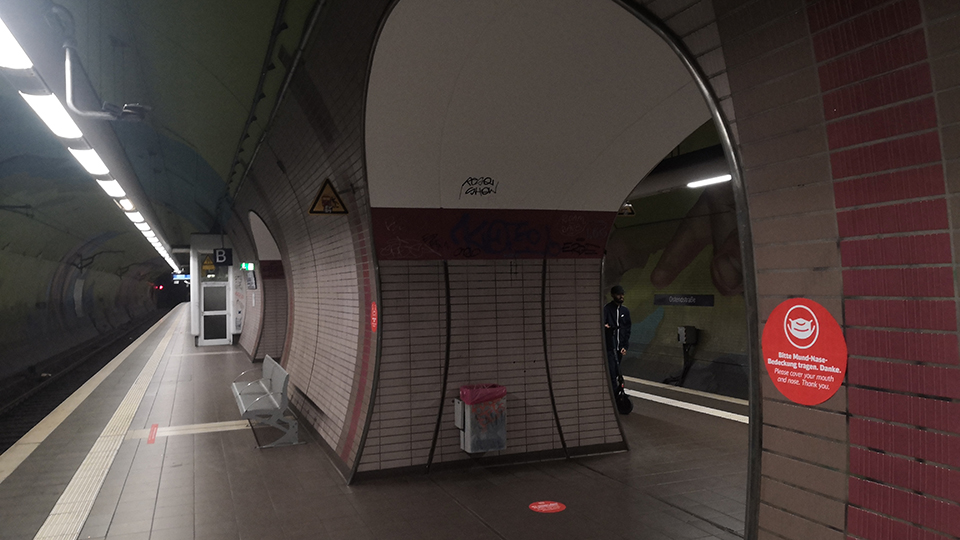
The system was developed for a specific seam. This allows a more explicit response to the local conditions. The S-Bahn station Frankfurt Ostendstraße is underground and simply constructed. It serves as a central station for entering, leaving and changing trains. Unpleasant light, brown colours and background noise are only some of the aspects that make this station not a pleasant place to be.
Scenario: Many people at the station
To ensure that the system can provide meaningful support in every situation, the influencing factors were defined differently for different scenarios. In a crowded station, for example, the system should have a calming effect in order to reduce the feeling of stress but still remain in the background.
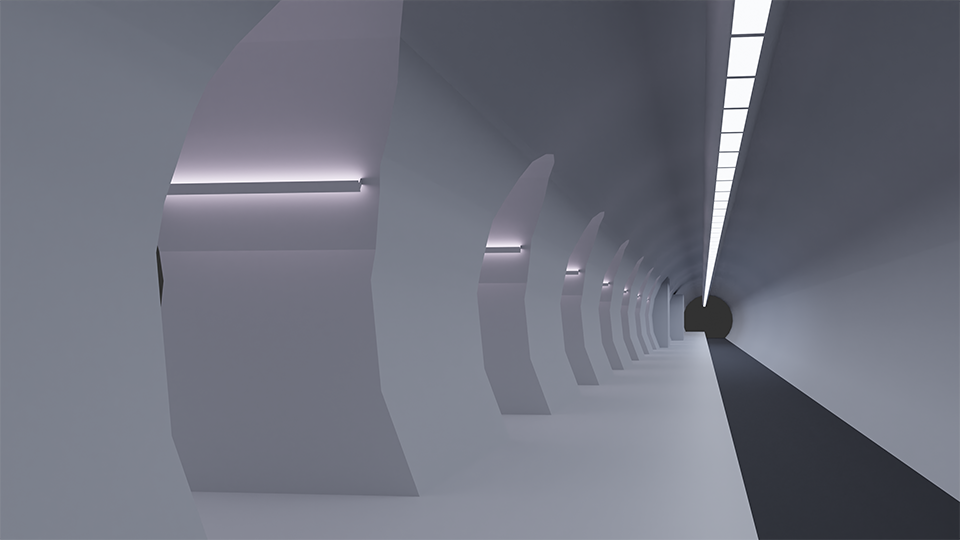
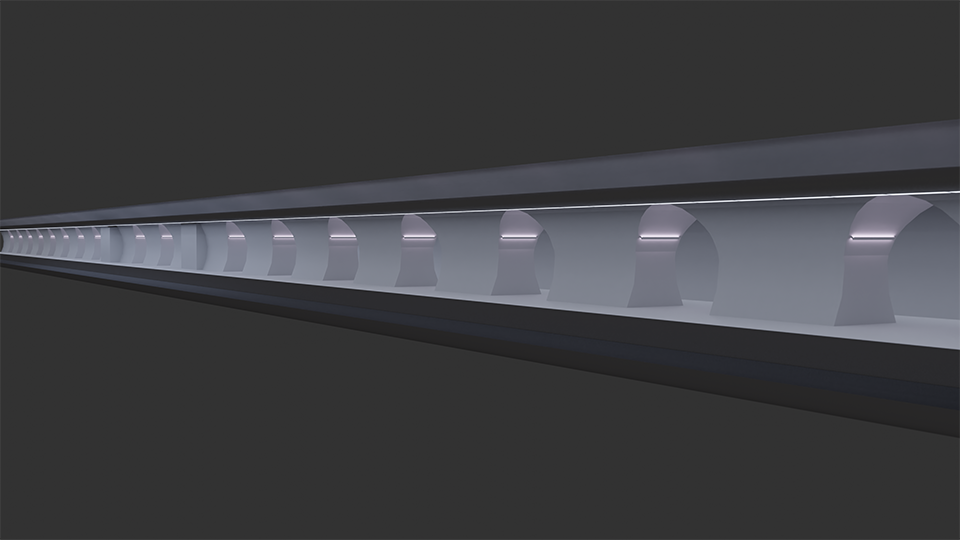
The light colour is blue and the light moves little or not at all. Quiet, slow music is playing.
Scenario: Disturbances in the operating process
On the other hand, an additional distracting effect is to be created in the event of disruptions in the operating process and the system comes more to the fore.
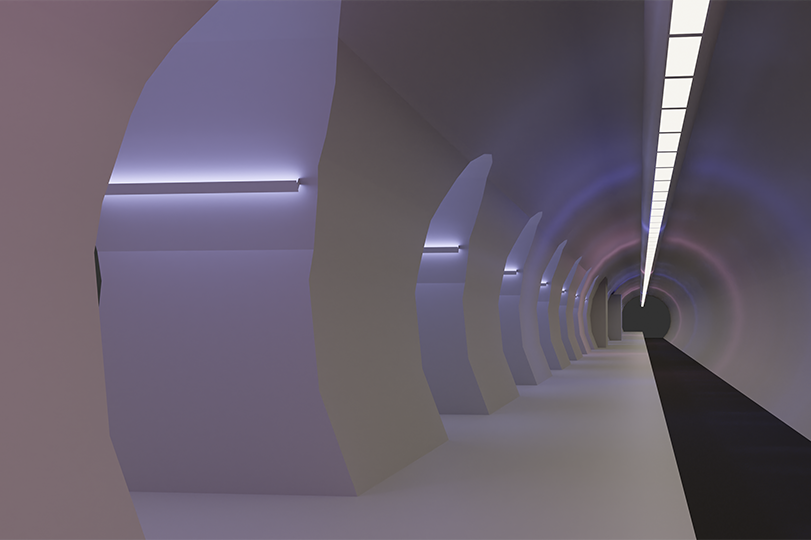
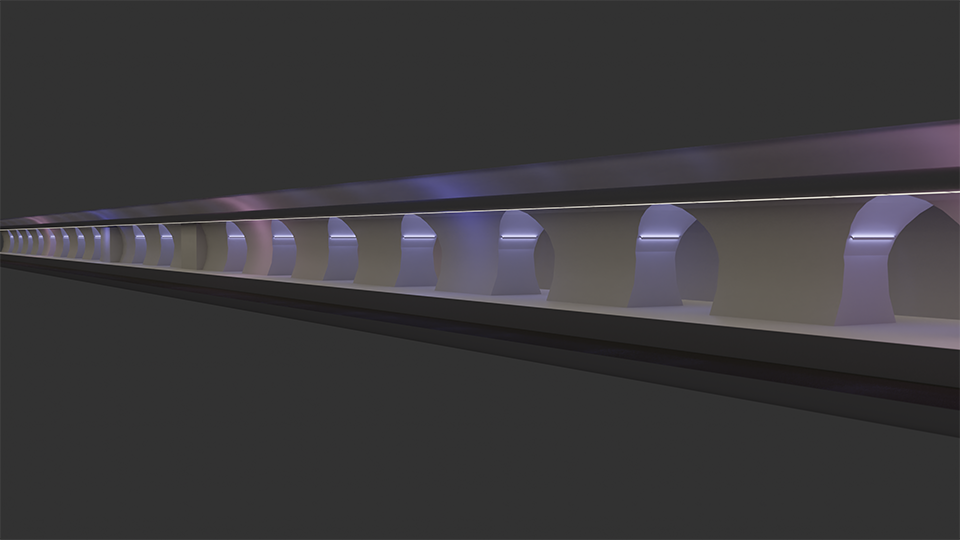
The light colour is blue and the light moves little or not at all. Quiet, slow music is playing.